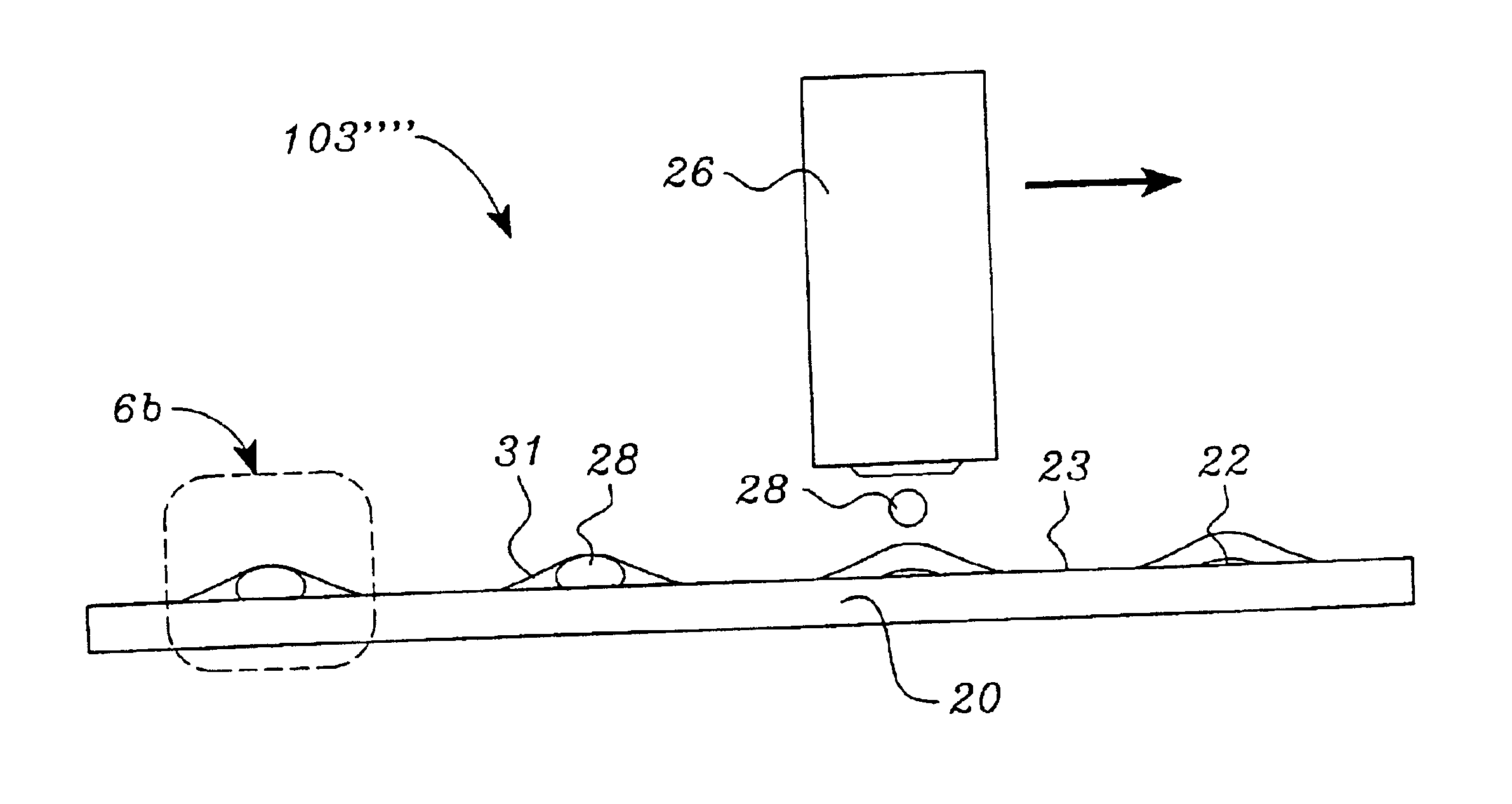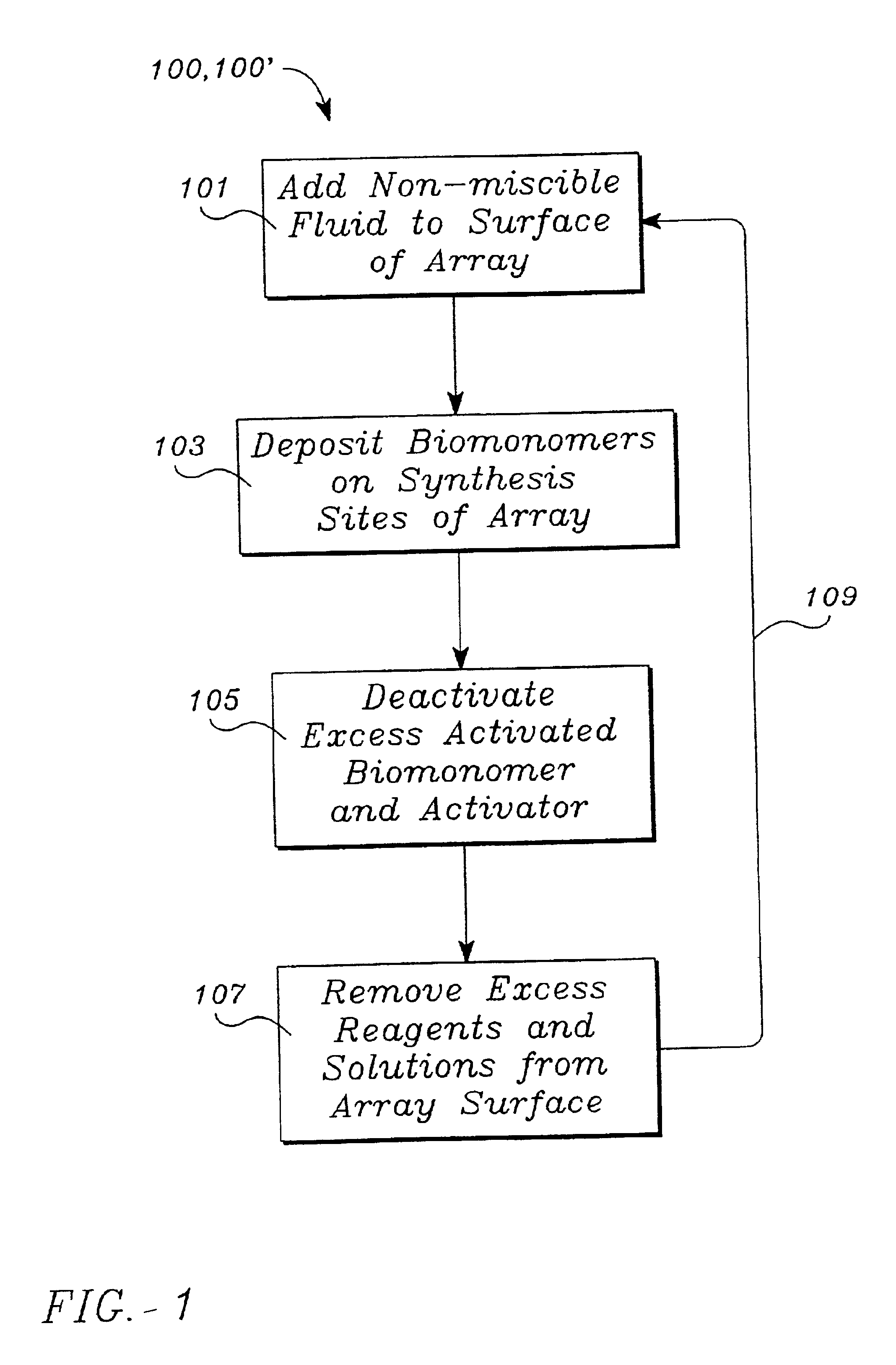Method of shielding biosynthesis reactions from the ambient environment on an array
- Summary
- Abstract
- Description
- Claims
- Application Information
AI Technical Summary
Benefits of technology
Problems solved by technology
Method used
Image
Examples
Embodiment Construction
Definitions
[0032]The following terms are intended to have the following general meanings as they are used herein:
[0033]Polynucleotide—a compound or composition that is a polymeric nucleotide or nucleic acid polymer. The polynucleotide may be a natural compound or a synthetic compound. In the context of an assay, the polynucleotide can have from about 20 to 5,000,000 or more nucleotides. The larger polynucleotides are generally found in the natural state. In an isolated state the polynucleotide can have a bout 30 to 50,000 or more nucleotides, usually about 100 to 20,000 nucleotides, more frequently 500 to 10,000 nucleotides. Thus, it is obvious that isolation of a polynucleotide from the natural state often results in fragmentation. The polynucleotides include nucleic acids, and fragments thereof, from any source in purified or unpurified form including DNA, double-stranded or single stranded (dsDNA and ssDNA), and RNA, including t-RNA, m-RNA, r-RNA, mitochondrial DNA and RNA, chlor...
PUM
| Property | Measurement | Unit |
|---|---|---|
| Density | aaaaa | aaaaa |
| Density | aaaaa | aaaaa |
| Density | aaaaa | aaaaa |
Abstract
Description
Claims
Application Information
 Login to View More
Login to View More - R&D
- Intellectual Property
- Life Sciences
- Materials
- Tech Scout
- Unparalleled Data Quality
- Higher Quality Content
- 60% Fewer Hallucinations
Browse by: Latest US Patents, China's latest patents, Technical Efficacy Thesaurus, Application Domain, Technology Topic, Popular Technical Reports.
© 2025 PatSnap. All rights reserved.Legal|Privacy policy|Modern Slavery Act Transparency Statement|Sitemap|About US| Contact US: help@patsnap.com



